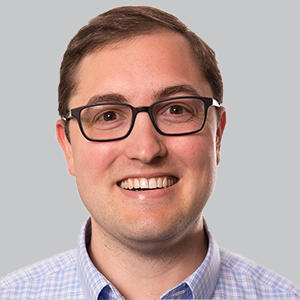Article
Survey Clarifies Key Psychosocial Issues, Symptoms for Young Patients With Narcolepsy
Author(s):
The data revealed some of the more common and problematic symptoms, challenges, and comorbidities that persist for these individuals despite care.
David G. Ingram, MD

Recently published survey data has possibly identified the most common and problematic symptoms, psychosocial challenges, and comorbidities that persist for young patients with narcolepsy, based on input from parents, patients, and health care providers.
All told, the respondents included 116 parents, 35 youth, and 30 providers, and the results suggested a high prevalence of psychosocial challenges in youth with narcolepsy and their families, supporting the existing data that show a biopsychosocial framework for treating pediatric narcolepsy.
“These data highlight the high prevalence of psychosocial challenges, discordance between physician and family ratings of challenges, and a high rate of medical comorbidities in youth with narcolepsy and support the application of a biopsychosocial framework in the assessment and treatment of pediatric narcolepsy,” the authors concluded. The survey was conducted by David G. Ingram, MD, associate professor of pediatrics, University of Kansas School of Medicine, as well as Lindsay Jesteadt, PhD; Claire Crisp; and Stacey L. Simon, PhD.
Based on the results, the group presented a simple pre-visit worksheet for use in the sleep clinic as a tool to better identify a range of patient needs. The worksheet is a single page and consists of clarification about diagnosis, the core symptoms the patient experiences, additional challenges, and comorbidities. It also queries the patient about medications and behavioral therapies utilized. “Although not a validated instrument, the pre-visit worksheet we developed provides a practical and free tool that can be readily applied in clinical settings,” they wrote.
READ MORE: FDA Approves MRI Labeling for Genio Obstructive Sleep Apnea Therapy
The survey data from the patients and the parents suggested that the most common symptoms by frequency were as follows: daytime sleepiness (patient, 91%; parent, 95%), disturbed nighttime sleep (patient, 74%; parent, 70%), depression/mood challenges (patient, 62%; parent, 57%), cataplexy (patient, 31%; parent, 28%), sleep-related hallucinations (patient, 13%; parent, 26%), and sleep paralysis (patient, 3%; parent, 16%; P <.05). (see FIGURE.)
FIGURE. Key Issues and Symptoms for Young Patients With Narcolepsy

Similarly, the most severe symptoms were as follows: daytime sleepiness (patient, 94%; parent, 100%), disturbed nighttime sleep (patient, 74%; parent, 77%), depression/mood challenges (patient, 71%; parent, 67%), cataplexy (patient, 40%; parent, 33%), sleep-related hallucinations (patient, 9%; parent, 30%; P <.05), and sleep paralysis (patient, 9%; parent, 18%).
“Most of the 18 queried psychosocial concerns were identified as substantial challenges by both adults and youth, including difficulty focusing and memory, school, worry and anxiety, diet and nutrition, lack of motivation, mood problems, and relationship problems,” Ingram et al. wrote. “In contrast, while physicians did recognize some of these challenges, they rated medication [adverse] effects and driver’s license issues as relatively greater challenges.”
Physicians most often rated difficulty focusing (67%), schoolwork (60%), college/workforce (50%), driver’s license (50%), and medication adverse effects (43%) as the frequent issues encountered. All other psychosocial issues, aside from worry about the future, easily upset, lack of motivation, feeling sad/down, and relationship problems occurred at rates less than 30%.
The physician group “widely acknowledged” frequent problems with attention and schoolwork, but their disproportionate rating of medication adverse effects and driver’s license issues was in part explained by a potential “desire to optimize driver safety for both the driver and public” and their “work to titrate medication doses by balancing efficacy and [adverse] effects for an individual patient with narcolepsy,” the investigators wrote.
Some of the strengths of the work, Ingram and colleagues noted, included this variety in viewpoints which highlighted the importance of these challenges. Additionally, the study was distributed via WakeUpNarcolepsy, a global patient advocacy organization, which implies that the data may be likely generalizable to a larger population.
“Our findings strongly support a biopsychosocial approach to assessment and continued monitoring within pediatric narcolepsy, and we propose a previsit worksheet to help aid clinicians in this endeavor. Future studies evaluating the impact of biopsychosocial assessment and multidisciplinary treatment approaches are warranted,” the group concluded.
REFERENCE
Ingram DG, Jesteadt L, Crisp C, Simon SL. Perceived challenges in pediatric narcolepsy: a survey of parents, youth, and sleep physicians. J Clin Sleep Med. 2021;17(1):13–22. doi: 10.5664/jcsm.8774
Newsletter
Keep your finger on the pulse of neurology—subscribe to NeurologyLive for expert interviews, new data, and breakthrough treatment updates.
2 Commerce Drive
Cranbury, NJ 08512
All rights reserved.




